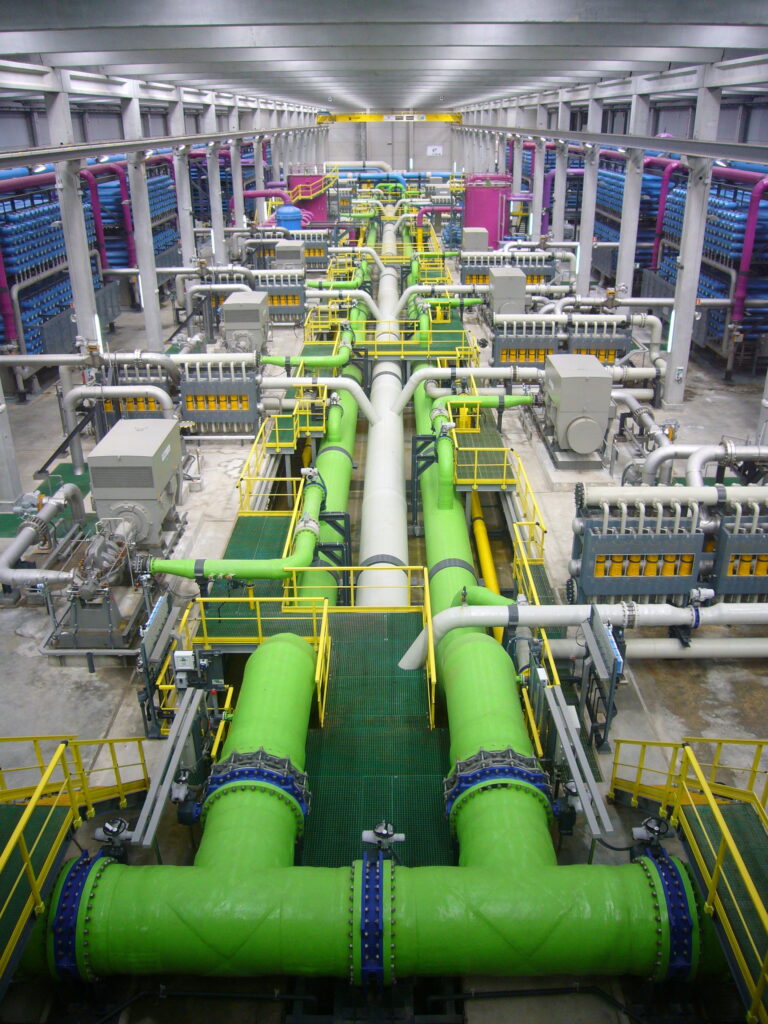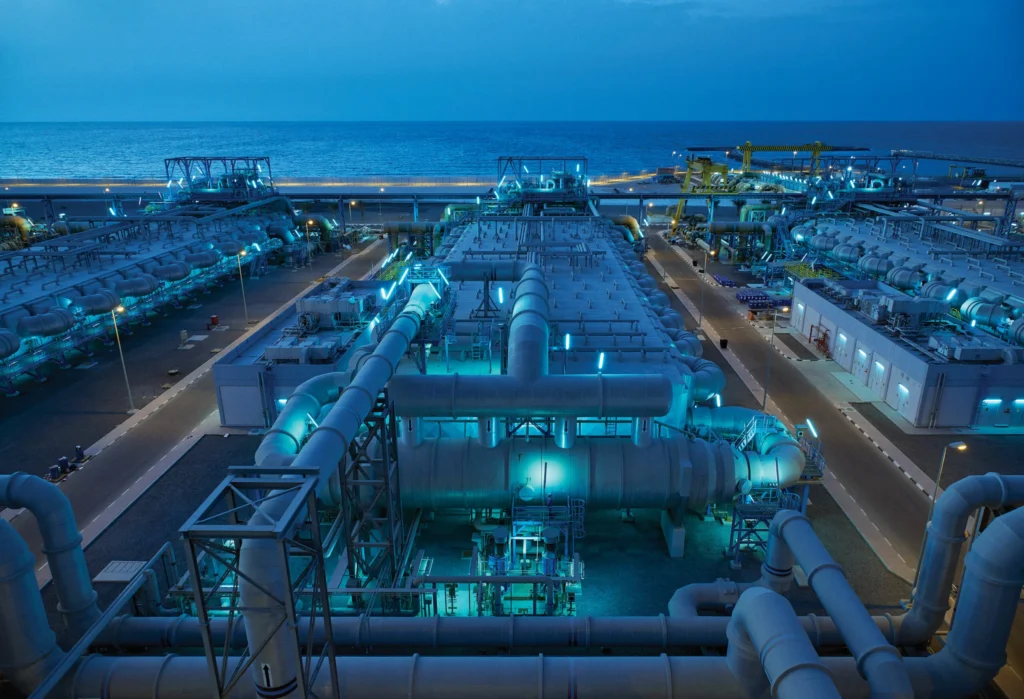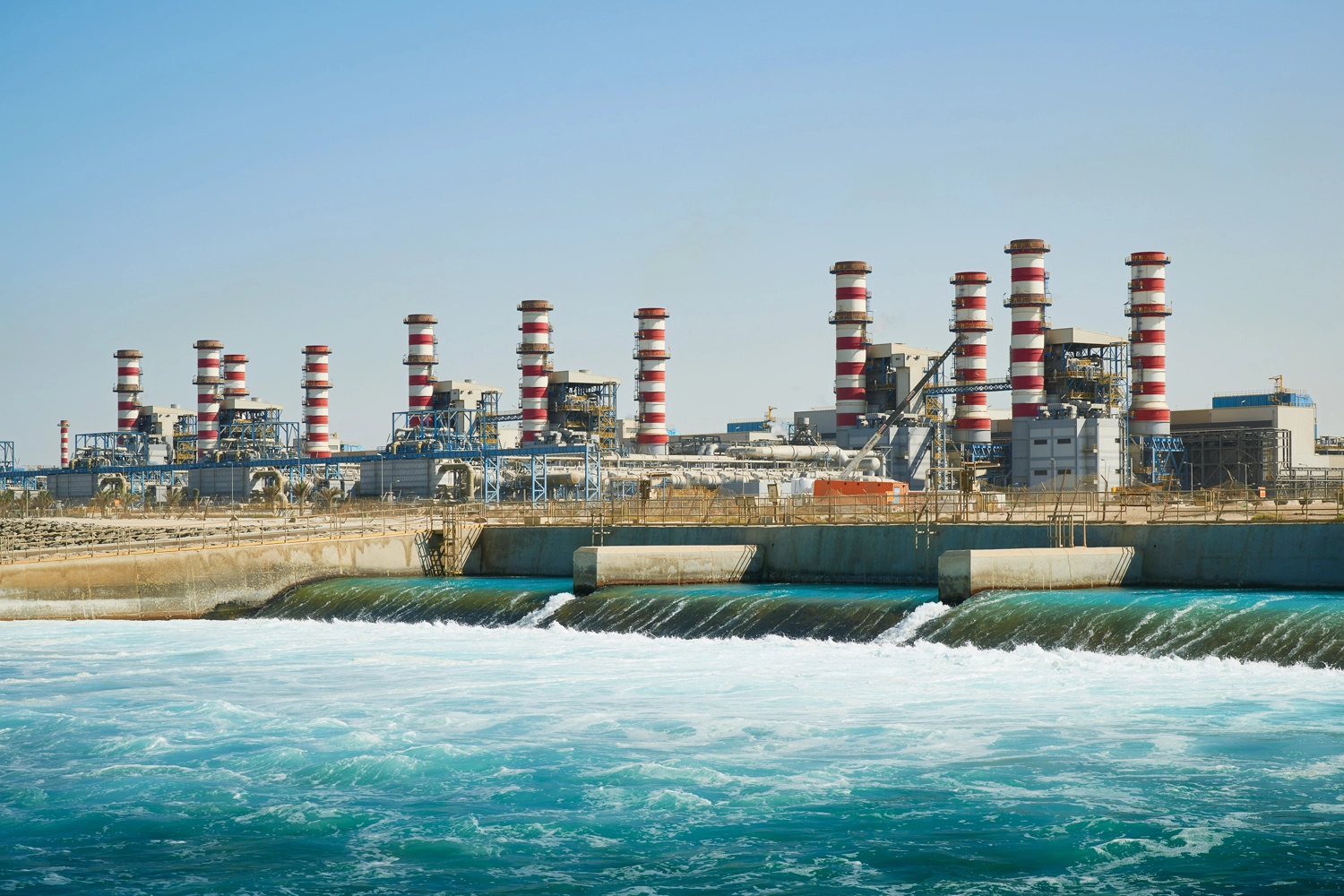Desalination is the process of removing salt and other minerals from seawater to make it safe for drinking, irrigation, and other purposes. This process is becoming increasingly important as fresh water resources become scarce in many parts of the world. The process typically involves filtering seawater through a membrane that removes the salt and other minerals, leaving behind pure, fresh water.
There are several methods of desalination, including reverse osmosis, thermal distillation, and electrodialysis. Reverse osmosis is the most commonly used method, as it is efficient, effective, and cost-competitive. In this method, seawater is forced through a semi-permeable membrane that removes the salt and other minerals. The purified water is then collected on the other side of the membrane, while the brine and other waste products are discharged.
It is not a new technology, but it has become more prevalent in recent years due to the growing demand for fresh water and the increasing availability of desalination technologies. While it is a useful solution for addressing water scarcity, it is not without its challenges, including high energy consumption and the generation of brine, which can have a negative impact on the marine environment. Nevertheless, with careful management and continued technological advancements, this process can play an important role in meeting the world’s growing demand for fresh water.
What is Ocean Desalination?
Ocean desalination is the process of converting seawater into fresh water that is safe for human consumption, agriculture, and other uses. The process is accomplished by removing the salt and other impurities from seawater through a series of filtration techniques.
This process is becoming increasingly important as freshwater resources become scarce in many parts of the world, especially in coastal areas where there is a high demand for fresh water and a limited supply of conventional freshwater sources. It provides a reliable and sustainable solution to address water scarcity in these areas, helping to meet the growing demand for fresh water.
There are several methods, including reverse osmosis, thermal distillation, and electrodialysis. Reverse osmosis is the most widely used method, and it involves forcing seawater through a semi-permeable membrane that removes the salt and other impurities, leaving behind pure fresh water. The purified water is then collected on one side of the membrane, while the brine and other waste products are discharged on the other side.
Ocean desalination plants can be either land-based or floating. Land-based desalination plants are typically located near the coast and are connected to the ocean through a pipe. The seawater is pumped into the plant, where it undergoes desalination, and the purified water is then transported to the consumers through pipelines or tanker trucks. Floating desalination plants are equipped with reverse osmosis units that are placed on barges or ships, and they can be relocated to different locations as needed.

This process is not without its challenges, including high energy consumption, the generation of brine, and the potential for environmental impacts. The high energy consumption of the desalination process makes it a relatively expensive source of fresh water, and the brine that is produced during the process can have a negative impact on the marine environment. Additionally, the intake and discharge of seawater can harm marine life, and the discharge of brine can raise the salinity levels in the surrounding waters, affecting the balance of the marine ecosystem.
Despite these challenges, it continues to be an important solution for addressing water scarcity in many parts of the world. With continued technological advancements and careful management, ocean desalination can play a vital role in meeting the growing demand for fresh water in the coming years.
Why Ocean Desalination?
The need for ocean desalination arises from the growing demand for fresh water in many parts of the world, especially in coastal areas where conventional freshwater sources such as rivers and lakes are scarce. Fresh water is essential for human consumption, agriculture, industry, and other uses, and its availability is becoming increasingly limited due to factors such as population growth, urbanization, and climate change.
In many coastal areas, the demand for fresh water is outpacing the supply, and traditional sources of freshwater such as rivers and lakes are becoming depleted. This has led to the increasing use of seawater as a source of fresh water, and ocean desalination has emerged as an important solution to address water scarcity in these areas.
Another factor contributing to the need for this process is the increasing frequency and severity of droughts, particularly in arid and semi-arid regions. Droughts can reduce the availability of freshwater sources, leading to water scarcity and forcing communities to rely on alternative sources such as seawater.
Furthermore, the need for it is also driven by the increasing demand for water in industries such as mining, power generation, and oil and gas production. These industries require large quantities of water for their operations, and ocean desalination provides a reliable and sustainable source of fresh water for these purposes.
In conclusion, the need for ocean desalination is driven by several factors, including the growing demand for fresh water in coastal areas, the increasing frequency and severity of droughts, and the growing demand for water in various industries. Ocean desalination offers a reliable and sustainable solution to address water scarcity and meet the growing demand for fresh water, making it an important technology for the future.
How has Ocean Desalination helped?

Ocean desalination has helped in a number of ways to address water scarcity and meet the growing demand for fresh water. Some of the ways in which ocean desalination has helped include:
- Providing a reliable source of fresh water: One of the biggest benefits of this process is that it provides a reliable source of fresh water in areas where conventional sources of freshwater are scarce. This has helped to address water scarcity and meet the growing demand for fresh water in many parts of the world, especially in coastal areas where freshwater sources are limited.
- Improving water security: This process has improved water security in many parts of the world by providing a stable and secure source of fresh water, even in the face of drought or other water-related challenges. This has helped to reduce the dependence on traditional sources of freshwater and improve the resilience of communities to water-related risks.
- Supporting economic development: This process has played an important role in supporting economic development by providing a reliable source of fresh water for agriculture, industry, and other sectors. This has helped to create new economic opportunities and drive growth in many parts of the world.
- Reducing dependence on traditional sources of freshwater: By providing an alternative source of fresh water, it has helped to reduce the dependence on traditional sources of freshwater, such as rivers and lakes. This has helped to protect these sources and preserve them for future generations.
- Improving public health: By providing a safe and reliable source of fresh water, ocean desalination has helped to improve public health, especially in areas where traditional sources of freshwater are contaminated or otherwise unsafe for human consumption.
In conclusion, ocean desalination has played an important role in addressing water scarcity and meeting the growing demand for fresh water. It has provided a reliable source of fresh water, improved water security, supported economic development, reduced dependence on traditional sources of freshwater, and improved public health, making it a crucial technology for the future.
Statistics
As of my knowledge cut-off in 2021, here are some statistics regarding ocean desalination:
- Global capacity: The global capacity of installed ocean desalination plants was approximately 70 million cubic meters per day (m3/day) in 2021, and it is expected to grow in the coming years as demand for fresh water increases.
- Leading countries: The leading countries in terms of ocean desalination capacity include Saudi Arabia, the United Arab Emirates, Israel, Spain, and the United States. These countries have a high demand for fresh water, combined with favorable conditions for ocean desalination such as warm weather and ample sunlight.
- Growth rate: The growth rate of ocean desalination has been increasing in recent years, with a compound annual growth rate of around 10% in the last decade. The growth of ocean desalination is expected to continue in the coming years as demand for fresh water increases and new technologies become available.
- Energy consumption: The energy consumption of ocean desalination is a major concern, as it is a relatively energy-intensive process. However, advances in technology have led to a decrease in the energy consumption of ocean desalination, and it is expected to become more energy-efficient in the future.
- Cost: The cost of ocean desalination has been decreasing in recent years, making it a more accessible solution for addressing water scarcity. The cost of ocean desalination varies depending on the location, size of the plant, and technology used, but it is generally more expensive than traditional sources of freshwater.
These statistics demonstrate the growing importance of ocean desalination as a solution for addressing water scarcity and the increasing demand for fresh water in many parts of the world. Despite the challenges, ocean desalination is expected to continue to play a significant role in meeting the world’s growing demand for fresh water in the coming years.
Conclusion

In conclusion, ocean desalination is a crucial technology for addressing water scarcity and meeting the growing demand for fresh water in many parts of the world. With a global capacity of around 70 million cubic meters per day in 2021 and a compound annual growth rate of 10% in the last decade, ocean desalination has become a widely used solution for fresh water production. The leading countries in terms of ocean desalination capacity are Saudi Arabia, the United Arab Emirates, Israel, Spain, and the United States, due to their high demand for fresh water and favorable conditions for ocean desalination.
However, ocean desalination is still a relatively energy-intensive process, and the energy consumption of desalination plants is a major concern. Advances in technology have led to a decrease in the energy consumption of ocean desalination, and it is expected to become more energy-efficient in the future. The cost of ocean desalination has also been decreasing, making it a more accessible solution for addressing water scarcity.
In conclusion, ocean desalination is an important technology for the future, and its continued development and deployment are crucial for addressing water scarcity and meeting the growing demand for fresh water. Despite the challenges, ocean desalination is expected to play a significant role in meeting the world’s growing demand for fresh water in the coming years, making it a crucial investment for the future.











